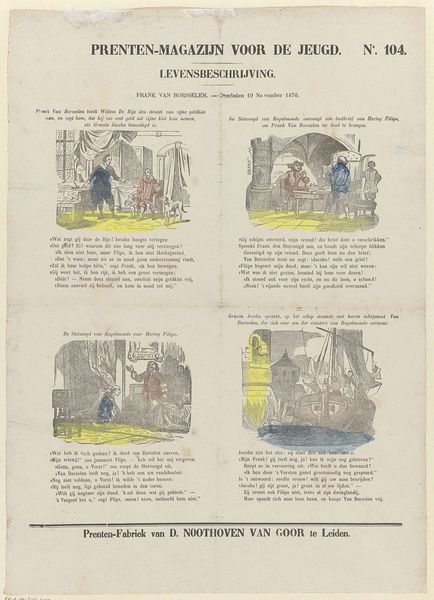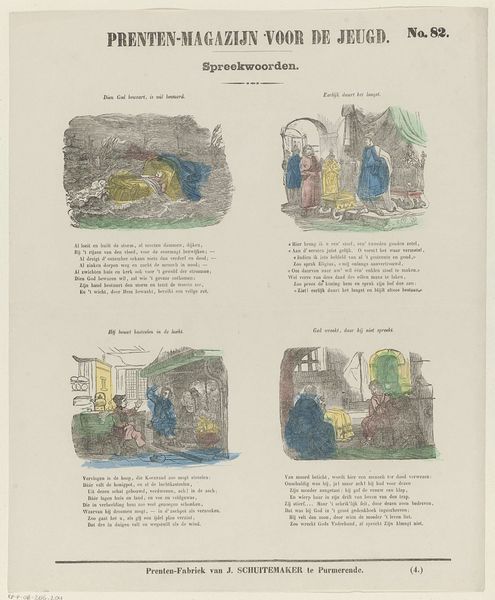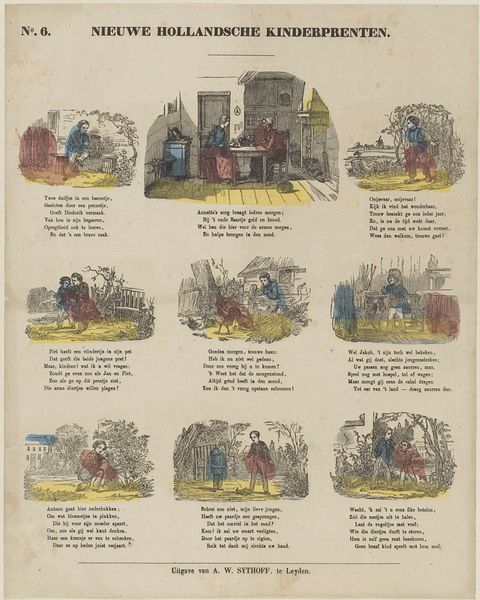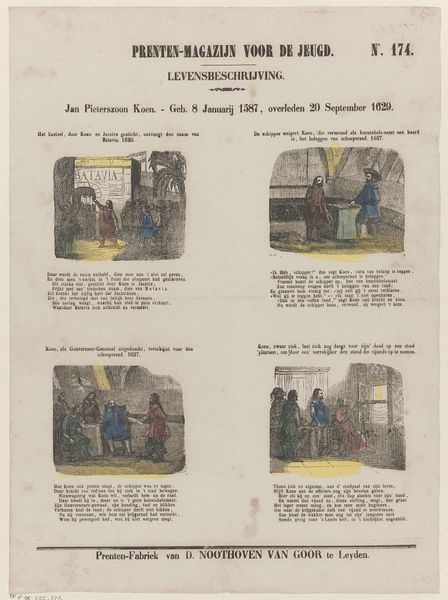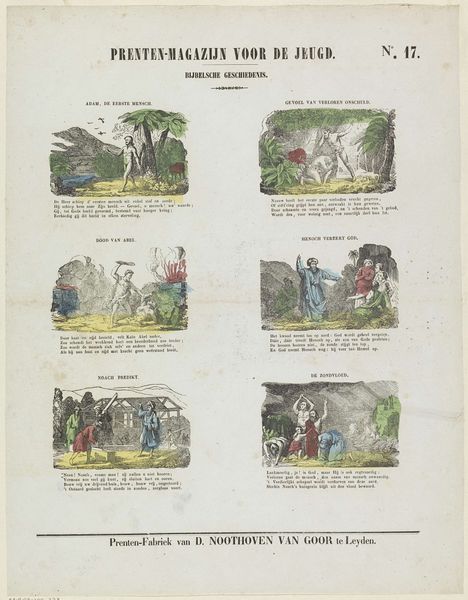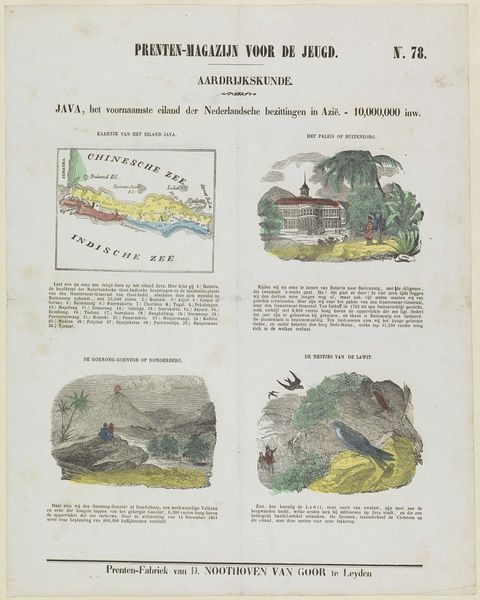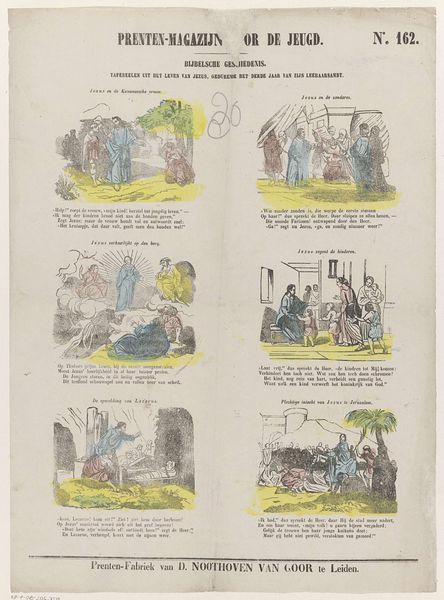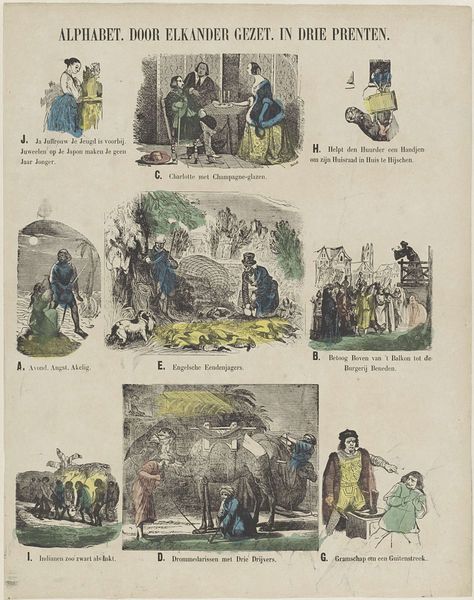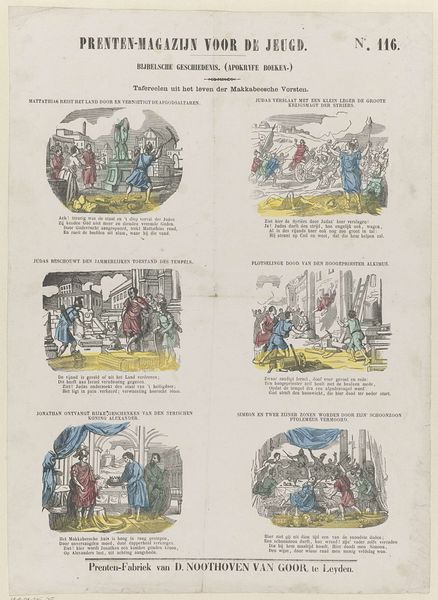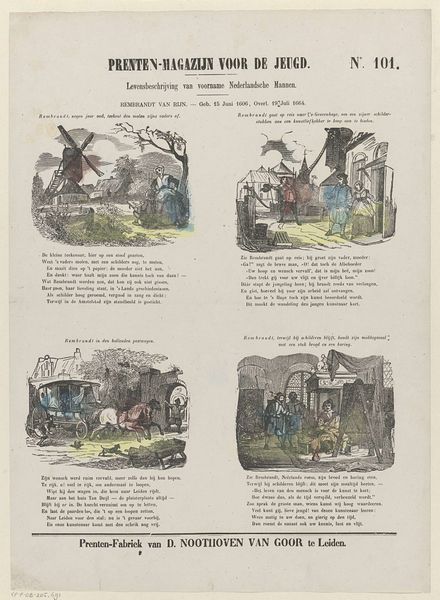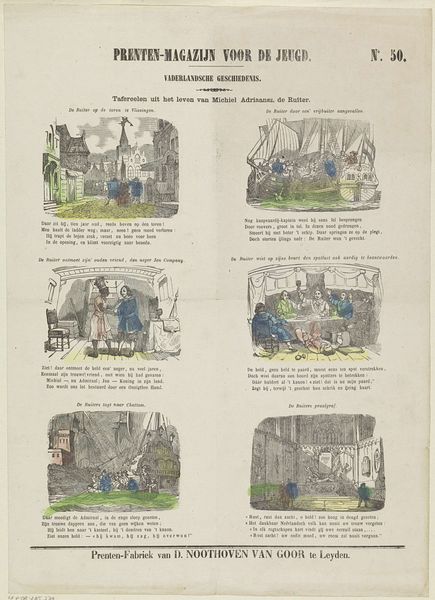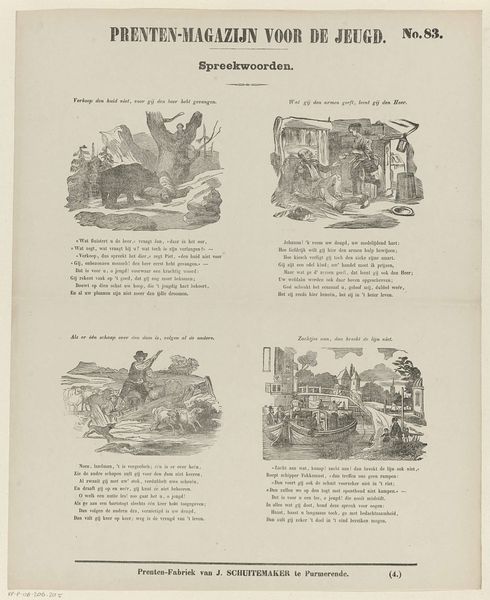
Spookhistoriën, medegedeeld door Meester Penneschacht aan zijne kostleerlingen 1850 - 1881
0:00
0:00
Dimensions: height 421 mm, width 304 mm
Copyright: Rijks Museum: Open Domain
Curator: This lithograph is entitled "Spookhistoriën, medegedeeld door Meester Penneschacht aan zijne kostleerlingen," and it was created by Dirk Noothoven van Goor sometime between 1850 and 1881. Editor: My first impression is that it feels very much of its time, with an aesthetic that speaks to folk tales and fireside storytelling. The way the image is broken up into vignettes reminds me of sequential art and early comic books. Curator: Yes, it’s a fantastic example of Romanticism’s fascination with narrative. The piece’s strength lies in its compositional arrangement. Each of the four panels contains different moments, all tied together by Noothoven van Goor’s careful deployment of form. Notice how each panel seems to balance the tonal arrangements against one another to provide a harmonious distribution of values across the composition as a whole. Editor: And it is from the 19th century so we can expect that this "storybook" style speaks to a moment of societal upheaval—industrialization, urbanization—where looking to regional or “folk” identity gave communities and citizens ways to contextualize massive changes and look back for ways to look forward. Even its title is long! The emphasis on a storyteller, “Meester Penneschacht” as central to the creation of the narratives being shared by the title itself can even lend itself to analysis when discussing themes of oral tradition versus technological production. Curator: Interesting points. Considering the themes, Noothoven van Goor seems to draw on common tropes to convey those emotional narratives. Observe the recurring imagery – spectral figures and children appearing in each. Editor: It does seem very intent on sparking intergenerational anxieties, especially regarding cultural or collective understandings. A very Romantic trope, I agree. And while on first glance, this feels so charming and naive, when considering its function, this speaks to 19th-century anxiety about shaping young minds through constructed cultural understanding as much as sharing simple “scary stories.” Curator: Precisely. It’s in considering its specific aesthetic qualities, the balanced distribution of visual weight, and Romantic leanings that we find what it truly is—a beautiful window into the artist's sensibility and vision. Editor: Yes, a moment of understanding—or a brief ghost story of society as it came to know itself.
Comments
No comments
Be the first to comment and join the conversation on the ultimate creative platform.
